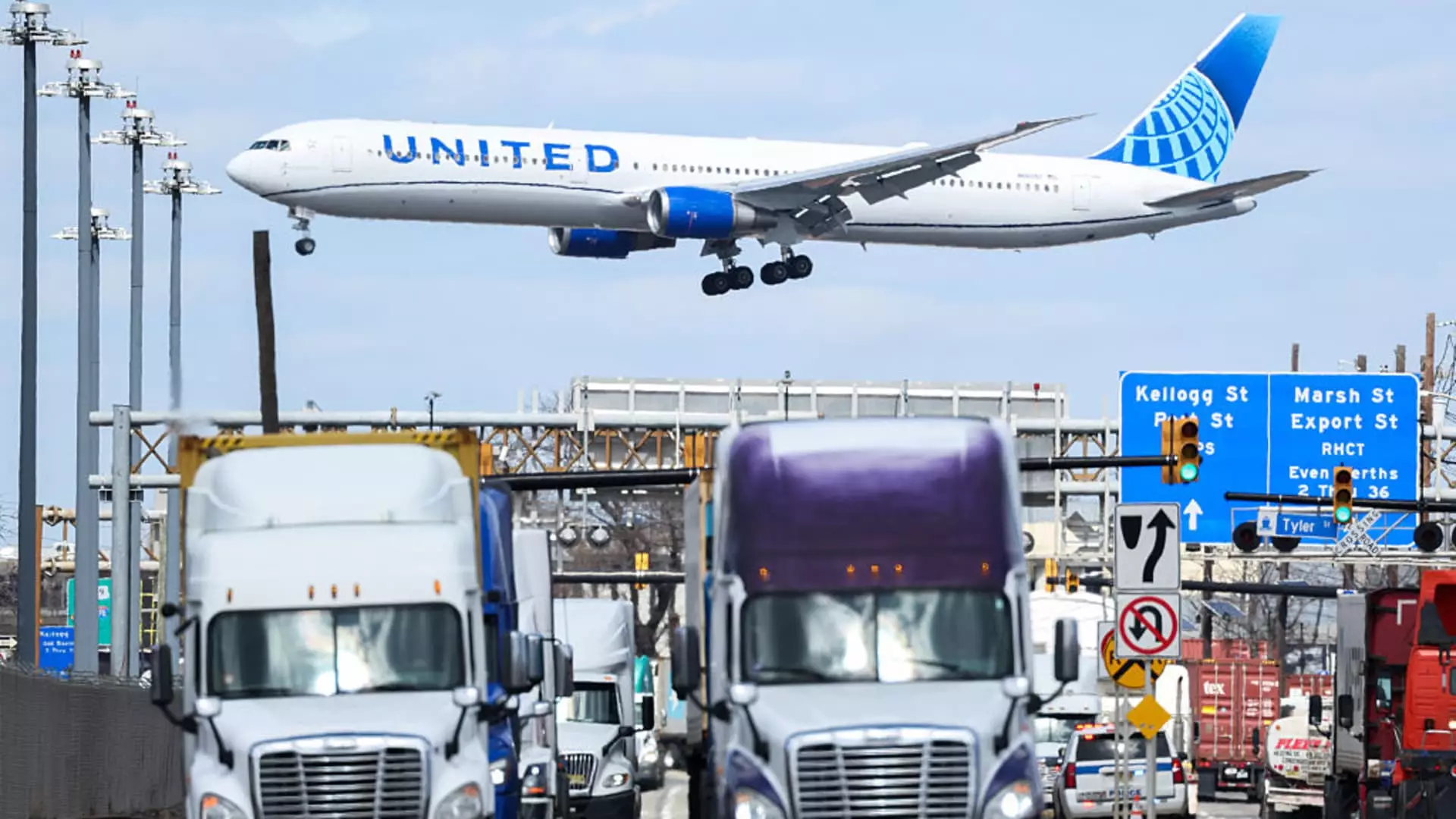In an unpredictable economic landscape, United Airlines has chosen to confront uncertainty with a double-take approach regarding its future expectations. While the carrier steadfastly holds on to its optimistic forecast for the year, it signals its awareness of potential pitfalls with a second, more pessimistic forecast that hinges on the possibility of a recession. This unusual tactic reveals a company navigating through a murky swath of economic ambiguity, and it underscores a broader trend of corporate caution amidst fluctuating consumer sentiment.
The reality is that these forecasts are not merely numerical projections; they are reflections of an industry under siege by economic pressures. United Airlines warns that a potential downturn could severely impact its profit margin this year. The reality is stark: while the company remains committed to a strong earnings outlook, the threat of economic stagnation looms large, making it painfully clear that the airline industry is highly susceptible to external shocks.
Strategic Cuts Amidst Strong Demand
Despite the looming specter of recession, United finds solace in the continued strength of international bookings, particularly within the premium cabin segment. As it plans to cut domestic flights by 4% to adjust to a softer travel demand, it balances this contraction with the positives drawn from its international operations. It’s a careful strategic pivot that illustrates savvy management but also highlights the dichotomy of travel preferences amidst economic uncertainties.
CEO Scott Kirby assures stakeholders that the company’s long-term strategy has equipped United to persevere in any market climate. It’s an assertion that merits scrutiny. While it’s commendable to have a multi-year plan, one has to question whether past successes are sufficient to sustain the company through forthcoming challenges. The airline industry is notorious for its volatility, and the notion that United can remain unscathed during economic turbulence may be overly optimistic.
The Tug-of-War for Consumer Spending
The challenge facing United Airlines is not just about navigating internal metrics—earnings reports and unit revenue are mere reflections of a larger battle for consumer spending. As the economy edges closer to potential recession territory, how the average traveler allocates their disposable income will be critical. Competition will inevitably intensify; with rivals like Delta Air Lines also adjusting their growth plans, consumers may find themselves with more options but fewer reasons to splurge on airline tickets.
The ongoing trade tensions and broader economic unrest, recently highlighted during President Trump’s time in office, serve as a backdrop to consumer sentiment that is anything but stable. Can United Airlines continue to lure in travelers willing to pay a premium, even as economic pressures mount? The answer remains complicated and murky. The desire for luxury travel experiences may hold firm, but the question remains whether this segment can sustain growth amid rising uncertainty.
A Cautiously Profitable Year
Year-over-year comparisons paint a picture of improvement for United Airlines, with net profit swinging from a loss to a $387 million gain in the first quarter. Such growth is commendable, yet it is important to recognize the precariousness of profits in an industry often teetering on the brink of disaster. Adjusted earnings outpacing Wall Street expectations is certainly an achievement, yet any elation felt by shareholders must temper with a healthy dose of skepticism.
The recent statements around unit revenue reveal room for concern as domestic flight figures dipped, while international routes fared better. Nonetheless, the focus on premium bookings may be a double-edged sword; should the economy take a turn for the worse, these segments could also see a hit as consumers retrench and become more price-sensitive.
The latest movement in United’s stock during after-hours trading may suggest a façade of stability, but it is imperative to look beyond short-term market reactions. In a climate where economic undercurrents can swiftly shift, the true sustainability of United’s prospects remains uncertain. They may be capitalizing on the high-end traveler market now, but changing economic tides could easily redistribute consumer priorities, potentially impacting future revenues.
In a world where predictions often come with the caveat of unpredictability, United Airlines illustrates the delicate balancing act of forecasting and responsive strategy in an industry defined by rapid change and uncertainty.


Leave a Reply